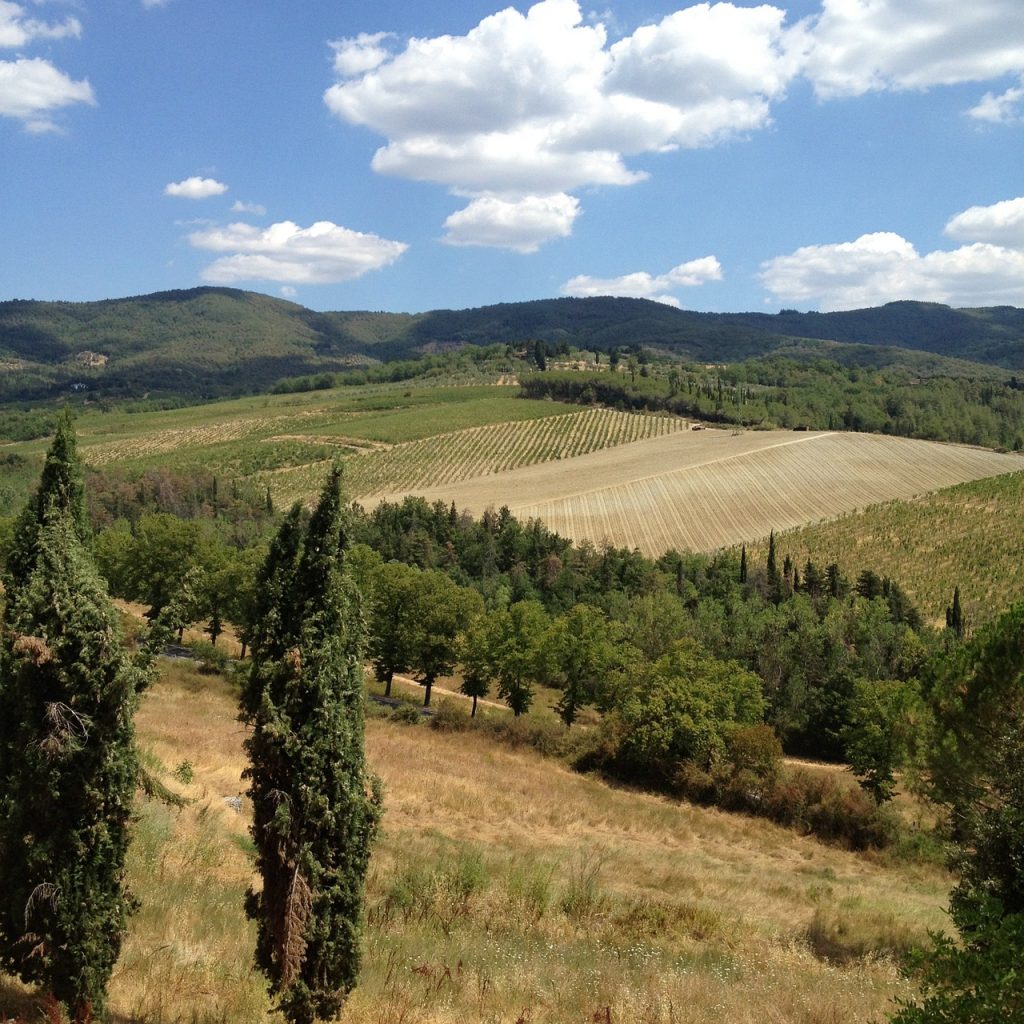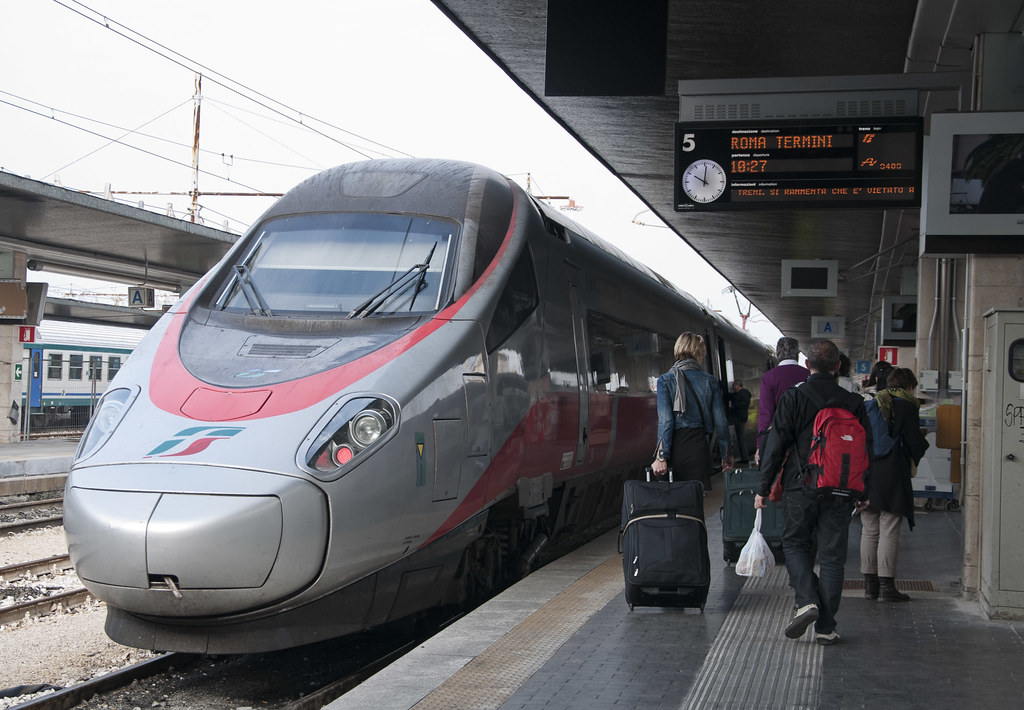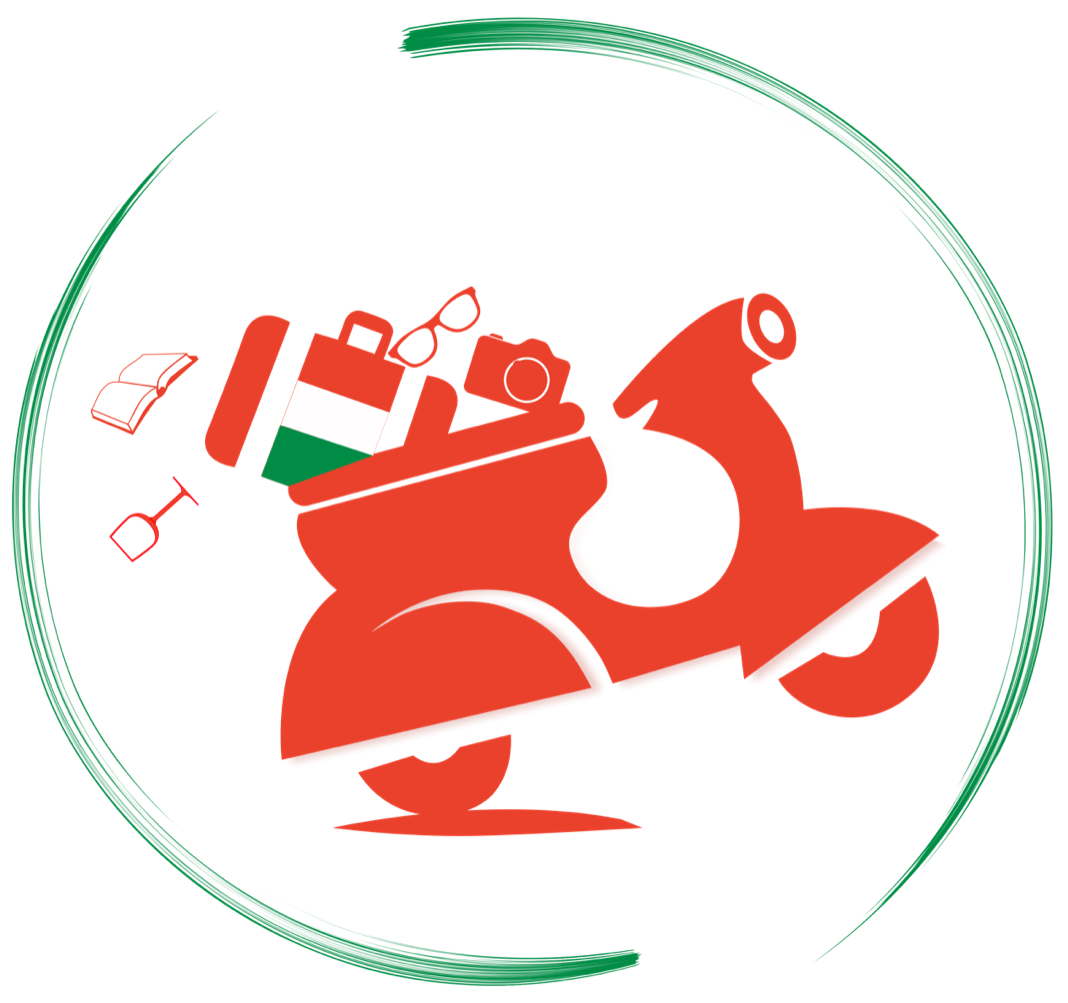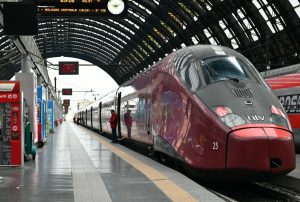Trains in Italy
Picture gliding past rolling vineyards, charming villages, and ancient ruins—all without touching a steering wheel.
Traveling through Italy is like flipping through the pages of a living history book, and there’s no better way to experience it than by trains in Italy.
For many travelers, especially those navigating Italy for the first or second time, the thought of foreign road signs, chaotic city traffic, and language barriers can be overwhelming.
But there’s good news: trains in Italy offer a stress-free, scenic, and efficient way to explore the country. In this guide, we’ll show you why trains are the smartest choice, compare options like Trenitalia, Italo, and regional trains, and offer practical tips to make your journey seamless.

The Case for Trains in Italy
Speed and Efficiency: Fast trains in Italy, such as Frecciarossa (operated by Trenitalia) and Italo, can whisk you from Rome to Florence in just 90 minutes—faster than any car or plane when you factor in airport check-ins and security lines. Unlike driving, there’s no need to worry about navigating unfamiliar roads, dealing with parking, or facing unexpected traffic jams.
Comfort: trains in Italy are designed for relaxation. With spacious seating, generous legroom, free Wi-Fi, and large windows framing stunning countryside views, the journey becomes part of the adventure. Onboard services often include cafes or snack bars, making it easy to enjoy a cappuccino as you watch the landscape roll by.
Stress-Free: Forget about toll booths, fuel stops, or deciphering Italian road signs. Trains drop you right in the heart of major cities, eliminating the hassle of finding parking or dealing with rental cars. Plus, train stations are well-connected with public transport, taxis, and even luggage services.
Section 2: When Trains Are Better (and When They’re Not)
Perfect for: City-to-city travel is where Italian trains shine. Routes between Rome, Florence, Venice, Milan, Naples, and Bologna are fast, frequent, and incredibly efficient. High-speed trains make it easy to plan day trips without the exhaustion of long drives.
Less Ideal for: While trains cover most of Italy, reaching remote villages, rural areas, or hidden gems like the Tuscan countryside might require a car. In regions like Puglia or Sicily, where train infrastructure is less developed, renting a car can offer more flexibility.
Quick Comparison Table
| Aspect | Train | Car | Plane |
|---|---|---|---|
| Speed | Fast (especially high-speed) | Moderate (traffic dependent) | Fast (but with long wait times) |
| Cost | Moderate to low (with advance booking) | High (rental, fuel, tolls) | High (especially last-minute) |
| Convenience | High (city-center stations) | Low (parking, navigation issues) | Moderate (airport transfers needed) |
| Comfort | Spacious, scenic views | Variable, depends on the car | Limited space, security checks |
| Eco-Friendly | Very eco-friendly | Less eco-friendly | Least eco-friendly |
Types of trains in Italy: Trenitalia vs. Italo vs. Local Trains (Regionali, Intercity, Frecce)
Trenitalia vs. Italo:

- Trenitalia: Italy’s national rail service offers a comprehensive network, including high-speed Frecciarossa, Frecciargento, and Frecciabianca trains, as well as Intercity and Regional services. It’s the go-to for connecting big cities and smaller towns alike.
- Pros: Extensive network, flexible schedules, integrates with regional routes.
- Cons: Slightly older trains on some routes, varying service quality.
- Italo: A private high-speed rail company, Italo focuses on major city routes with modern, luxurious trains known for their comfort and reliability.
- Pros: Sleek, modern trains with excellent onboard amenities, competitive prices.
- Cons: Limited to high-speed routes; doesn’t cover smaller towns.
Types of Trains:
- Regionali (Local Trains): Cheap and perfect for short distances. No seat reservations, slower speeds, but ideal for connecting smaller towns.
- Intercity: Moderate speed, reserved seating, and connects mid-sized cities. Great for longer distances where high-speed trains aren’t available.
- Frecce (Frecciarossa, Frecciargento, Frecciabianca): High-speed, luxury trains with routes covering major cities. The fastest and most comfortable way to travel long distances.
Comparison Table of types of trains in Italy
| Train Type | Speed | Comfort Level | Price Range | Best For |
| Frecciarossa | Up to 300 km/h | High | $$$ | Long distances, major cities |
| Italo | Up to 300 km/h | High | $$-$$$ | Major city routes |
| Intercity | Up to 200 km/h | Moderate | $$ | Mid-sized cities |
| Regionale (Locali) | 50-150 km/h | Basic | $ | Short distances, small towns |
Practical Train Travel Tips for First-Time Visitors
How to Buy Tickets:
- Use Trenitalia or Italo’s official websites or mobile apps for easy online booking.
- Purchase in advance for cheaper fares, especially on high-speed routes.
- Regional train tickets can often be bought on the day of travel.
Understanding Train Classes and Seat Reservations:
- First Class: More spacious seating, quieter cabins, and complimentary drinks/snacks.
- Second Class: Comfortable, budget-friendly, and perfectly suitable for most travelers.
- Seat reservations are mandatory on high-speed trains but not on regional trains.
Navigating Italian Train Stations Like a Pro:
- Arrive 20-30 minutes early, especially at large stations like Roma Termini.
- Check departure boards for your platform (binario).
- Validate paper tickets at yellow machines before boarding (not needed for online tickets).
- Luggage can be stored above seats, at the end of carriages, or in dedicated racks.
FAQ Section
Can I bring luggage on Italian trains?
Yes, there are no strict luggage limits. You can bring suitcases, backpacks, and even small carry-ons without additional fees.
Is it cheaper to buy Italian train tickets in advance?
Yes, especially for high-speed trains like Frecciarossa and Italo. Booking early can save you up to 50% compared to last-minute fares.
Do I need to validate my train ticket in Italy?
Only if you have a paper ticket for regional trains. Use the yellow or green machines at the station. Digital tickets don’t require validation.
Are Italian trains reliable and safe?
Yes. Italy’s train system is known for its punctuality, safety, and efficiency, especially high-speed routes.
What’s the difference between Trenitalia and Italo trains?
Trenitalia offers a broader network covering both high-speed and regional routes, while Italo focuses on high-speed routes with newer trains.







